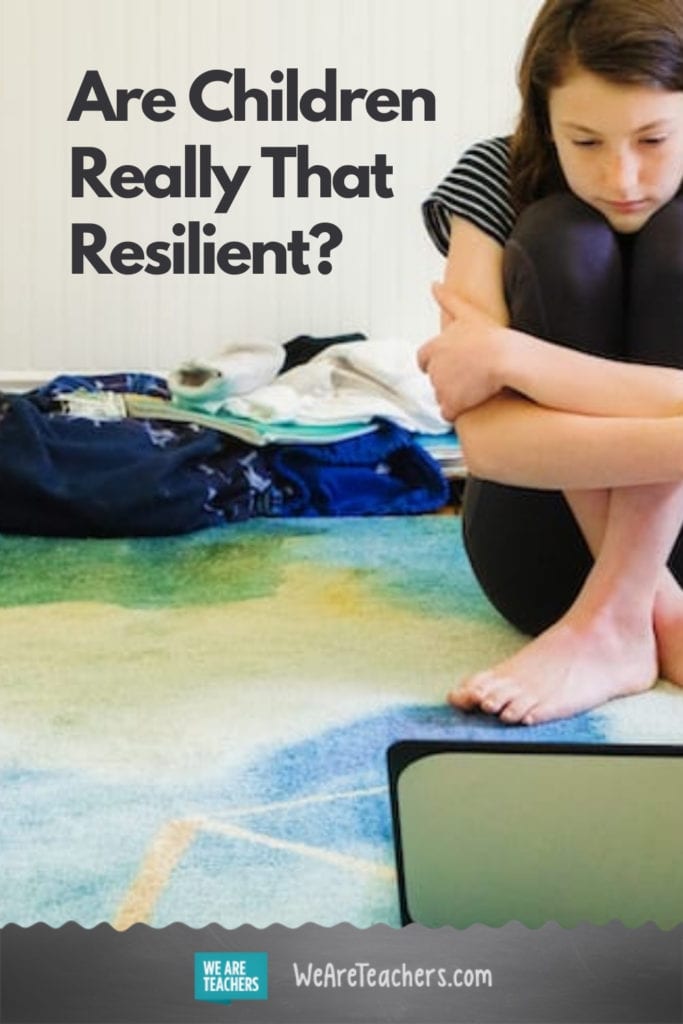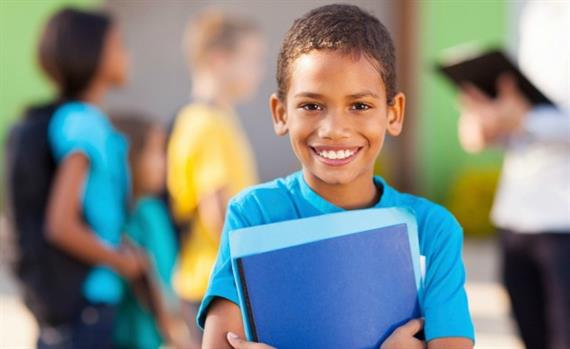I recently spoke with a past parent who relayed that their child finally had a playdate this summer. It had been many months since the two friends had seen each other (or anyone really). To say that these two Pre-K children were besties is really an understatement. Yet when they finally got together for an outside playdate the two friends reverted to younger styles of parallel play. This behavior was so different from their giggles and scheming, whispered chats that consumed the months before March.
Teachers, parents, and society alike always hear that kids are resilient. They’ll bounce back, they’ll be fine, they’ll be okay. Yet, the social world has changed and the world of education has shifted mostly online for back to school. And I wonder … are children really that resilient?
A Caution on the Concept of Resiliency
“A word of caution with that statement that kids are resilient,” says Lisa Dion, a licensed professional counselor, registered play therapist and supervisor, and president of the Synergetic Play Therapy Institute. “It’s easier to say, yeah we know this is hard but my kid will get through it. Is there a piece there, as adults, where we are using that kind of thinking as a way to not actually have to engage and do some of the harder work? Is there a piece in there that we as adults are not wanting to take responsibility for?”
Constant stress, or toxic stress, and trauma have long-lasting physical and mental health impacts. Adults, at the minimum, have at least some tools to understand how to take care of themselves. Kids don’t have these tools. Yet we still expect them to bounce back even during high-stress, long-term situations. We expect them to be resilient when we really should be expecting, or at the very least aiming, for them to thrive.
[contextly_auto_sidebar]
So, What is Resiliency?
If we ask ourselves, “Are children resilient?” we really need to define the term. According to the 2012 study Resilience in children and youth, resiliency is the act of succeeding in spite of adversity, where a child possesses strengths and is able to overcome adverse conditions and still thrive. Research also states that there are many children who encounter stress and adversity in their life, and still fair well despite their exposure to many challenges. Other research by Alvord and Grados in 2005 states that most definitions of resilience must include conditions where a risk or challenge was identified, and then the child or youth followed through with some defined measure of a perceived positive outcome.
Teachable Traits
Current thinking in education and child development increasingly suggests that children’s resilience isn’t an innate trait. By repeating that “kids are resilient,” we lose sight of what new research on resilience shows. Resiliency should be taught, either explicitly or implicitly, through relationships, and social and emotional development to grow children’s grit, executive functioning, and coping skills.
For day-to-day functioning, resilience can look like a child being able to calm themselves down after a setback. “As a child gets dysregulated, how quickly can they come back?” Dion asks. “Can they get back to their breath and their body and a sense of safety in themselves? We look at the faster or more adept a child is at doing that, the more resilience they have.”
This need for regulation starts at a young age and needs to be taught. Children don’t learn it themselves. “Helping a child to develop their own ability to self regulate, first starts with co-regulation,” says Dion. “A child needs to learn it in a relationship first before then they are able to do it on their own.”
Resilience Relies on Relationships
In a 2017 article in the American Psychological Association’s Monitor on Psychology, traits that contribute to children’s overall resilience rely heavily on the social aspect of life. This involves the attachment system of both parents and primary caregivers, close relationships with other caring adults, as well as close relationships with peers. In the same article, Suniya Luther, Ph.D., a professor of psychology at Arizona State University says, “resilience rests, fundamentally, on relationships.”
Study after study supports the positive outcomes that come from a social and emotional, relationship-based learning program. So what happens when that social factor, those teacher and peer relationships, disappears? How do we expect children and teens to bounce back when the main aspects to developing resilience—relationships, social awareness, and emotional skills—are taken away?
How Teachers Can Help
As teachers, we still need to teach to relationships. Even online, relationships are the first steps that will lead to success in the rest of the classroom.
“One of the best things that teachers can do right now is recognize that children are coming in with a stress response of some degree; they are coming in with an empty tank,” says Dion. “I know that academics are important, yet if we teach to the primary goal of co-regulating, the child will get to the academics faster.”
Teachers can also encourage parents to participate in social time, be that Zooming with friends, or writing letters to relatives. When it comes down to it, any way to encourage and nourish those relationships is best. “If I’m choosing as a family to not have relationships with other peers,” says Dion, a parent herself, “how am I going to bring relationships into my child’s life knowing that it is huge in their development and so important for their own sense of self?”
Yes, children are resilient, but they need extra support. As Dion says, “that statement is completely true when given the right resources and scaffolding, and with the right supports and tools.”
The social world as we know it has changed and education is following suit. But, with the right focus, the students and children can and will bounce back.
Are children resilient? Share your thoughts in our WeAreTeachers HELPLINE group on Facebook.
Also, check out 8 Ways to Help Teach Students Resiliency.


